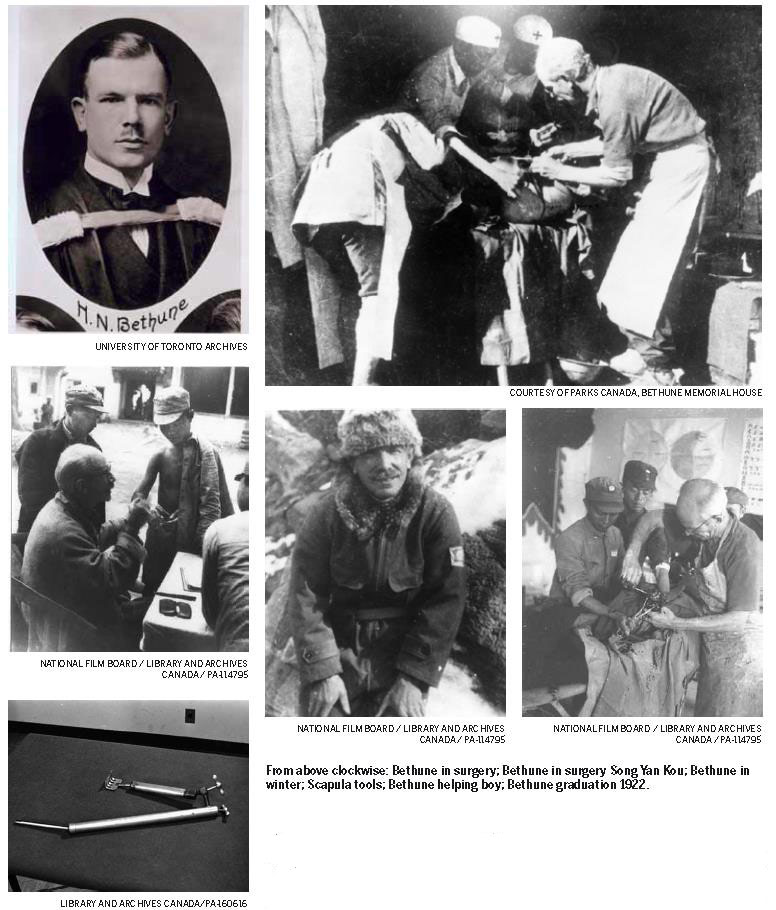A physician for the ages
Updated: 2014-05-16 23:21
By Professor Edward Shorter in Toronto, Medical historian at the University of Toronto (China Daily Canada)
Remembering Norman Bethune's legacy with a statue and more.
Becoming Doctor Bethune (1890–1927)
Who was Norman Bethune?
Born in the central Ontario town of Gravenhurst on March 4, 1890, Henry Norman Bethune came from a family with deep Canadian roots. An ancestor, the Reverend John Bethune, had emigrated from Scotland to North Carolina, fought on the Loyalist side during the American Revolution, and founded the first Presbyterian congregation in Montreal. His descendants included distinguished clergymen and educators, yet the family also had a wild streak. The Reverend's eldest son Angus roamed the North and sailed to China with the great fur–trading companies. Norman's father Malcolm Nicholson Bethune was likewise a wandering adventurer until he met Elizabeth Anne Goodwin, an English Presbyterian missionary in Hawaii. The couple returned to Toronto, and following their marriage in 1887 Malcolm became a fervent evangelist who preached in various Ontario centres.
Young Henry Norman was deeply affected by his family's wanderings, developing a restlessness of spirit along with keen intelligence, curiosity, and pride in his heritage. Inspired by the example of his grandfather, an early Toronto surgeon and educator also named Norman, he was strongly attracted to a medical career. In spite of frequently changing schools, he did well academically. In 1907, at age 17, Bethune finished high school in Owen Sound with honours and was eligible for admission to the University of Toronto.
Yet getting there was another matter. Norman's parents had little money, so like many of his classmates who hailed from farms or small towns across Ontario he had to work his way through university and medical school. Before entering the pre-medical Physiology and Biochemistry program in 1909 he worked in northern construction camps and taught in a one-room rural schoolhouse. His entry to medical school was similarly delayed, and in 1911 he took a job as a labourer-teacher for the Reading Camp Association at a lumber camp near Sudbury. The combination of gruelling physical labour and giving classes in English and arithmetic to the loggers satisfied his love of the wilderness and desire to serve others.
Bethune enrolled in the Faculty of Medicine in 1912, but with the outbreak of World War I in 1914 he interrupted his studies to enlist as a stretcher-bearer. Wounded in the leg during the second battle of Ypres, he was given a medical discharge and completed his medical degree in December 1916 as a member of the war-shortened “class of 1917” (which also included Frederick Banting). Bethune re-enlisted, spent the rest of the war as a medical officer, then undertook internships and surgical training in London and Edinburgh, becoming a member of the Royal College of Surgeons of Edinburgh in 1922.
In August 1923 Bethune married Frances Campbell Penney, a bright and cultivated woman from a prominent Edinburgh family, but the relationship proved stormy. The couple divorced in 1927, and he remarried two years later, and divorced again in 1933. Despite the failure of his marriage Bethune remained deeply in love with Frances as long as he lived.
The couple sailed to North America in 1924. That fall Bethune started a medical practice in Detroit, Michigan. After two years of relentless effort he was beginning to prosper, then misfortune struck: At age 36 he contracted tuberculosis – an often fatal disease for which the standard treatment was extended rest – and in December 1926 was hospitalized at the Trudeau Sanatorium in New York State. After reading a paper there on a radical alternative treatment, the pneumothorax procedure (collapsing the affected lung to allow it to heal), he demanded the surgery. It was successful. Bethune's condition improved rapidly and by December 1927 he made a full recovery. This experience changed his life: Bethune now emerged as a crusader against tuberculosis and the social conditions that spawned the disease.
